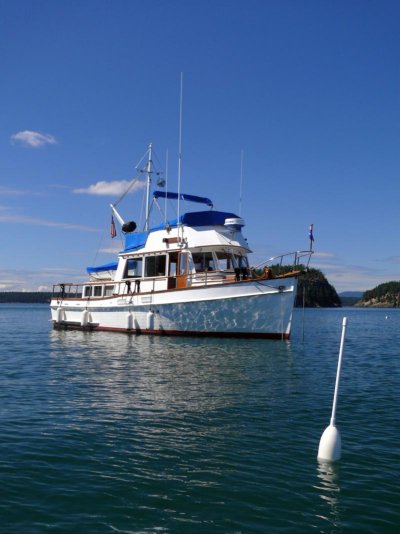FF
Guru
- Joined
- Oct 12, 2007
- Messages
- 22,552
This months Practical Sailor ran a test in a spot with winds of up to 30K,but in protected waters,so there was no surge load.
At 3-1 (40ft sailboat)the max load veering was 1200-1400lbs.
At 7-1 down to 900lbs. 10-1 was best.
So the anchor has to handle fairly light loads.Even on power boats with higher windage.
The chain tests became bar tight as the boat slewed side to side.
With such light loading perhaps many folks are using line that is too thick to stretch,increasing the shock loads the boat must suffer?
The second problem they pointed out was Burying anchors really DO dig in.
In heavy weather, a trip line on a buoy would reduce the recovery loads on the shank.
WE use a buoy every time as it makes the anchoring picture easier for the next arrival.
FF
At 3-1 (40ft sailboat)the max load veering was 1200-1400lbs.
At 7-1 down to 900lbs. 10-1 was best.
So the anchor has to handle fairly light loads.Even on power boats with higher windage.
The chain tests became bar tight as the boat slewed side to side.
With such light loading perhaps many folks are using line that is too thick to stretch,increasing the shock loads the boat must suffer?
The second problem they pointed out was Burying anchors really DO dig in.
In heavy weather, a trip line on a buoy would reduce the recovery loads on the shank.
WE use a buoy every time as it makes the anchoring picture easier for the next arrival.
FF


